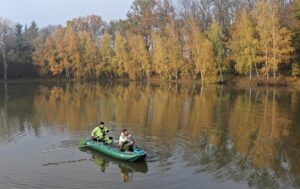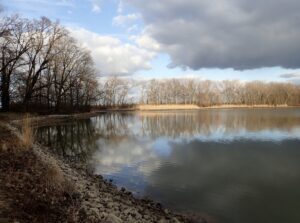How does the water get in the tap?
Author: Julie Winterová, PhD student at Czech Technical University in Prague
Water has always fascinated me. Even though I studied civil engineering subjects, my path led me to water. I am lucky to live in a country with a functioning drinking water supply system. For many years, I didn’t need to ask questions such as: How does the water get in the tap ? & What barriers must be overcome ?
Mains water supplies more than 90% of the Czech population with drinking water. Around one half of this water is sourced from the surface. Historically, ponds were traditionally built to control and use surface water. Many larger reservoirs were constructed during the Communist era of the 1960´s and 1970´s. Most of these depend on surface water, thus on rains. However, heavy rains transport sediment to reservoirs, which is one of the main problems that I focus on.


I’ve studied the effects of land-use change on the conditions in the Vrchlice Reservoir Watershed (near the historical Kutna Hora town), which has been highly affected by sediment input. The original forests were transformed to agricultural land. Later, in the 20th century, small parcels of lands were consolidated into large fields. Even though more people now use words such as sustainable, ecological, etc., and some areas have recovered from the intensive farming of the Communist era, soil loss and sediment transport to reservoirs still occurs.
I started to work with a USLE based model, to simulate sediment production and its transport to rivers and ponds. To collect data for calibration, I went to the fields with my colleagues many times, to measure sediment volumes in several ponds. This is the most beautiful part of my work, spending a day in nature by the water. By running the calculations for different scenarios, I wanted to determine whether historical development, land-use change or crop rotations had the most significant effect on sediment distribution across the watershed. Using the model to locate areas with high potential for sediment production was another part of my study, to inform the introduction of erosion control measures.
The SHui project, which I am happy to be part of, has let me see other landscapes, countries, and continents, with their beauty and (soil and water management) issues. Seeing many international teams cooperate gives me hope that we can return to a more sustainable landscape management.
